FDRC Seminar Series
Each semester, FDRC invites speakers from across the United States and abroad to present their research on fluid dynamics to members of the Penn State community. Topics include fundamental research on turbulence, numerical methods for CFD, the development of experimental techniques, and engineering applications related to medicine, propulsion, combustion, and more.
Seminars are accompanied by complimentary coffee and donuts!
The seminars can also be watched remotely via Zoom at this link.
Spring 2025 Series
Seminars in this series are hosted every Thursday at 9:30 am in 135 Reber Building.
Schedule
| Date | Speaker | Affiliation | Host |
|---|---|---|---|
| Jan. 16 | Douglas Kelley | University of Rochester | Melissa Brindise |
| Jan. 23 | Philippe Bardet | George Washington University | Jeffrey Harris |
| Jan. 30 | Sameer Rao | University of Utah | Brian Fronk |
| Feb. 6 | Hai Wang | Stanford University | Adri van Duin |
| Feb. 13 | Matthew Bross | Pennsylvania State University | Internal Speaker |
| Feb. 20 | Dan Fries | University of Kentucky | Samuel Grauer |
| Feb. 27 | Bo Cheng | Pennsylvania State University | Internal Speaker |
| Mar. 6 | Paulo Arratia | University of Pennsylvania | Sebanti Chattopadhyay |
| Mar. 13 | Spring Break | ||
| Mar. 20 | Michael Krane | Pennsylvania State University | Internal Speaker |
| Apr. 3 | Sili Deng | Massachusetts Institute of Technology | Jacqueline O'Connor |
| Apr. 10 | Michael Graham | University of Wisconsin–Madison | Romit Maulik |
| Apr. 15 | Raúl Cal | Portland State University | Xiang Yang |
| Apr. 17 | Sean Bailey | University of Kentucky | Mark Miller |
| Apr. 24 | Johan Larsson | University of Maryland, College Park | Xiang Yang |
| May 1 | Pavlos Vlachos | Purdue University | Michael Roan |
Abstracts and Biosketches
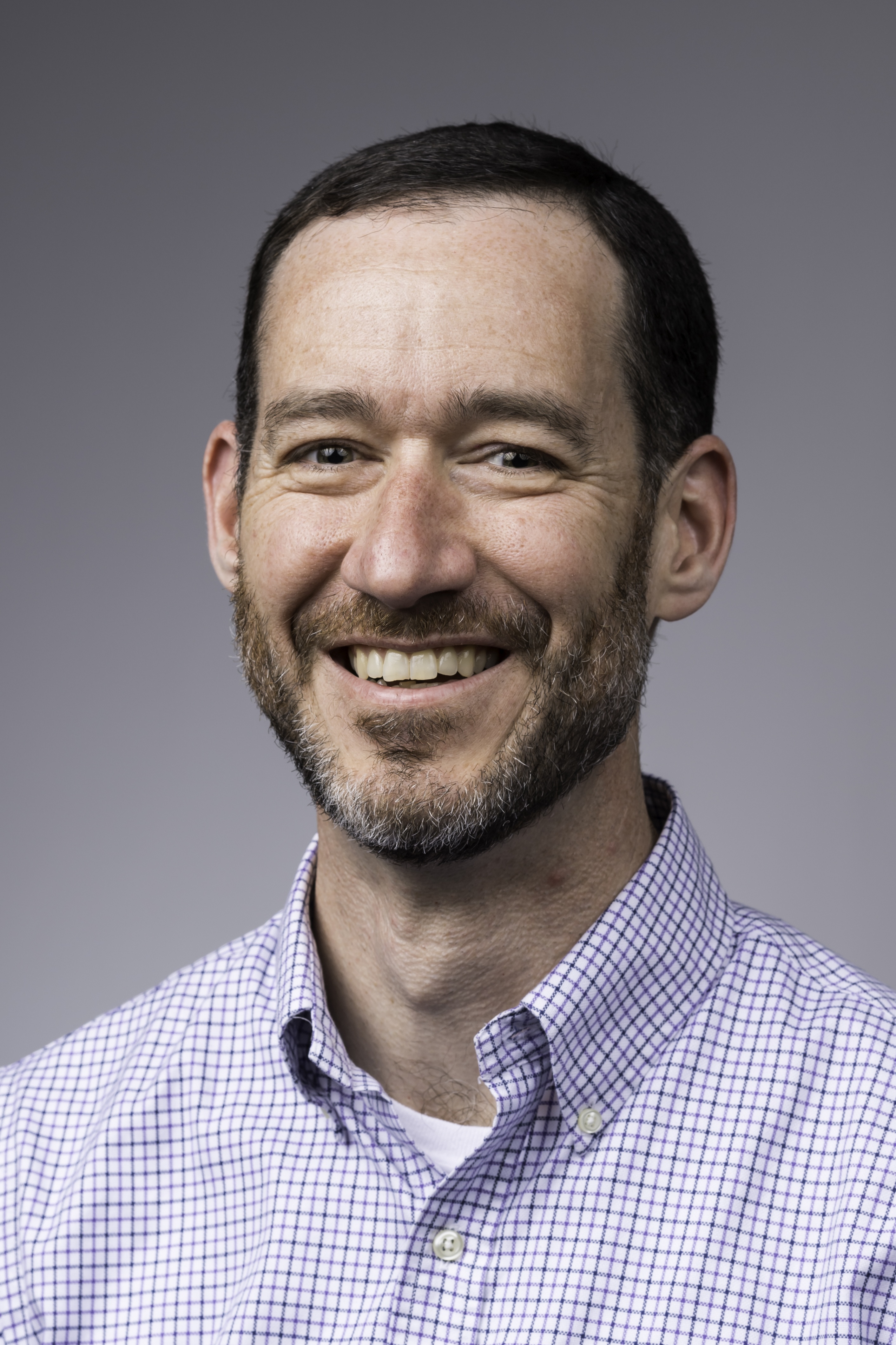
Douglas Kelley
Professor, Department of Mechanical Engineering
University of Rochester
Brain fluid dynamics: In vivo measurements and data-driven modeling
January 16, 2025
The glymphatic system circulates water-like fluid around and through brain tissue during sleep, clearing metabolic wastes whose accumulation might otherwise cause diseases like Alzheimer's and Parkinson's. However, because the modern glymphatic model was formulated just a decade ago, many fluid dynamical questions remain open. Working closely with neuroscientists, my team and I make in vivo measurements of flow velocities and of the shapes, sizes, and pulsations of fluid passageways in the brain. Combining measurements with machine learning, we infer flow rates, shear stresses, and pressure gradients. We have learned that motion of adjacent vessel walls is a key flow driver, that fluid passageways seem to be shaped to minimize their hydraulic resistance, that vortices sometimes appear, that small pressure gradients can drive substantial flow, and that contrast-enhanced magnetic resonance imaging (DCE-MRI) may be combined with machine learning to measure flows deep in the brain. I will present those findings and close with a discussion of some important open questions in brain fluid dynamics.
Biosketch
Dr. Douglas H. Kelley is Professor of Mechanical Engineering at the University of Rochester. He and his group study biophysical and magnetohydrodynamic fluid mixing, especially cerebrospinal fluid flow in the brain and liquid metal flow in technology and planets. His studies of brain fluid flow have implications for Alzheimer's disease, traumatic brain injury, stroke, and related pathologies that involve brain waste clearance or swelling. Doug earned a Ph.D. from University of Maryland and did postdoctoral research at Yale University and MIT. He won a National Science Foundation CAREER Award, the University of Rochester's David T. Kearns Faculty Teaching and Mentoring Award, and the Hajim School of Engineering's Edmund A. Hajim Outstanding Faculty Award. He is a Moore Foundation Experimental Physics Investigator.
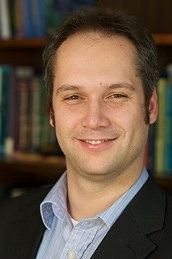
Philippe Bardet
Professor, Department of Mechanical and Aerospace Engineering
George Washington University
Recent developments in measuring the smallest velocity scales
January 23, 2025
The velocity length-scales at interfaces are often the smallest encountered in many flows. They drive important phenomena, such as skin friction, heat and mass transfers, etc. For example, in high-Reynolds number wall-bounded flows the viscous wall unit can be on the order of the micrometer along the hull of ships or in the core of nuclear reactors; in some boiling conditions, micro-layers can be only a few micrometers thick. Historically, it has been challenging to directly probe flows in such conditions, which has led to much empiricism in numerical models.
This presentation will present recent developments in optical diagnostics to measure wall shear and flows in the direct vicinity of walls. The developments include the extension of molecular tagging velocimetry (MTV) to measure instantaneous wall shear stress in high-Reynolds number flows, the adaptation of Fourier integral microscopy (FIMic) to MTV and particle tracking velocimetry, and the generalization of FIMic to plenoptic 3.0.
Biosketch
Dr. Philippe M. Bardet's research group is developing non-intrusive laser diagnostics for probing complex flows. Notably, Dr. Bardet's group has advanced Molecular Tagging Velocimetry to measure wall shear stress directly in high-Reynolds number flows and applied Fourier Integral Microscopy, a new form of plenoptic imaging, or integral microscopy, to velocimetry. Recently, his group has extended the applicability of this plenoptic approach to macroscale, naming the technique plenoptic 3.0. He has led several in-situ experimental campaigns where his team instrumented large experimental facilities with custom diagnostics. His research is applied to naval hydrodynamics and nuclear thermal hydraulics.
He is the director of the ONR Consortium on Naval Enterprise Pathways (CoNEP), a large effort to increase workforce development in the Washington, DC area through innovative research. He is also the director of the newly formed DC Computational Imaging Research Center (DC-CIRC), a partnership between industry, National Laboratories, and academia to push the limits of computational imaging techniques for fluid mechanics.
Dr. Bardet teaches courses in Fluid Mechanics, Thermodynamics, Electronics, Experimental Methods, and Optics.
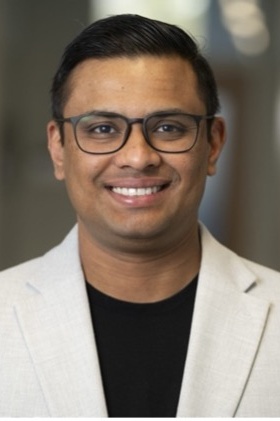
Sameer Rao
Assistant Professor, Department of Mechanical Engineering
University of Utah
Unifying perspectives on near-critical convective heat transfer at the microscale
January 30, 2025
Near-critical fluids, particularly carbon dioxide (CO2), offer unique advantages for forced convection in microchannels, making them an increasingly compelling choice for compact, high-performance thermal systems. Their exceptional thermophysical properties—high heat transfer coefficients, low viscosity, and thermal stability—near the critical point enable efficient operation in applications ranging from renewable energy and waste heat recovery to aerospace and electronics cooling. However, the steep property gradients near the pseudocritical region, coupled with abnormal variations in density, specific heat, and thermal conductivity, present significant challenges in resolving flow behavior and accurately predicting heat transfer. This work combines high-speed schlieren imaging with microchannel heat transfer experiments to explore pseudocritical transitions, flow boiling dynamics, and the interplay between subcritical and supercritical regimes. By developing a unified mechanistic understanding for heat transfer in near-critical fluids, we address fundamental gaps in current understanding and provide critical insights for designing next-generation cooling technologies.
Biosketch
Dr. Sameer Rao is an Assistant Professor in the Department of Mechanical Engineering at the University of Utah. He studies both fundamental and applied problems related to heat and mass transfer, with an emphasis on transport processes as they relate to the micro- and nanoscale. He received his Ph.D. and M.S. in Mechanical Engineering from Rensselaer Polytechnic Institute in 2015, and Georgia Institute of Technology in 2012. Prior to joining the University of Utah in 2018, he worked at Massachusetts Institute of Technology as a postdoctoral researcher. He is the recipient of the University of Utah Early Career Teaching Award and has been recognized as a Presidential Societal Impact Scholar.
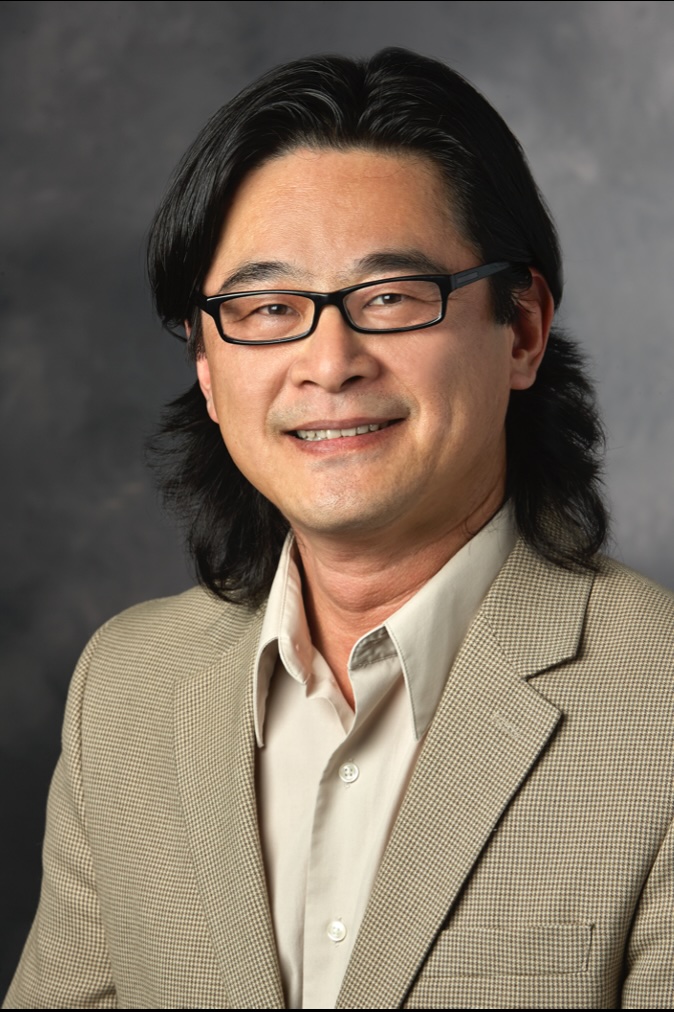
Hai Wang
Professor, Department of Mechanical Engineering
Stanford University
Dynamics and kinetics of gas-phase and multiphase detonations
February 6, 2025
A basic understanding of detonation structure is critical to problems ranging from Type Ia supernova explosions to hydrogen explosion safety and hypersonic propulsion. This talk will focus on two related research problems: the origin of detonation cellular structure and the drag and vaporization of liquid droplets upon shock impact. High-speed microscopic jetting exceeding several km/s is theoretically studied, modeled, and analyzed in gaseous detonation. The jets deliver energy to produce and sustain an overdriven shock that defines the shape and size of detonation cells. The jets arise along with vorticity generated at points of shock intersection and are subsequently transported in a stagnation flow configuration after shock collision. Jetting provides a discrete energy transfer and focusing mechanism essential for sustaining global detonation propagation and cellular structures for the observed mixtures. The jetting also raises a range of interesting scientific questions concerning reaction kinetics, molecular transport, and gas dynamics under non-equilibrium thermodynamic conditions. In the area of shock-droplet interaction, we propose a coupled drag and vaporization model describing the simultaneous momentum and energy transfers from the post-shock gas, leading to acceleration and non-equilibrium heating and vaporization of the droplet mass behind a shock.
Biosketch
Dr. Hai Wang is Professor of Mechanical Engineering at Stanford University. Prior to his appointment at Stanford, he was the Northrop Chair in Engineering and Professor of Aerospace and Mechanical Engineering at USC. He received his Ph.D. in Fuel Science from Penn State in 1992. He was a Professional Research Staff at Princeton University from 1994 to 1996 before starting his faculty career at the University of Delaware. He is best known for his work on the mechanisms of PAH and carbon formation in reacting flows and development of chemical kinetic models for fuel pyrolysis and combustion. He has made contributions in the application of ab initio quantum chemistry and reaction rate theory in chemical kinetics. He developed stochastic methods for detailed modeling and uncertainty quantification. He contributed to the transport theories of nanoparticles and large molecules, atmospheric heterogeneous chemistry, and nanomaterials synthesis and its applications in solar cells and lithium-ion batteries. His current research projects include high-speed propulsion, detonation, combustion and propellant chemistry, phonons and their effects on electron quantum tunneling in layered materials, and battery chemistry. He was the recipient of the AIAA Propellant and Combustion Award in 2018, and the Humboldt Research Award in 2019. He is a Fellow of ASME and an inaugural Fellow the Combustion Institute. He served as the Co-Editor-in-Chief of Progress in Energy and Combustion Science from 2014 to 2024. He is currently the President of the Combustion Institute, an international, non-profit, educational and scientific society.
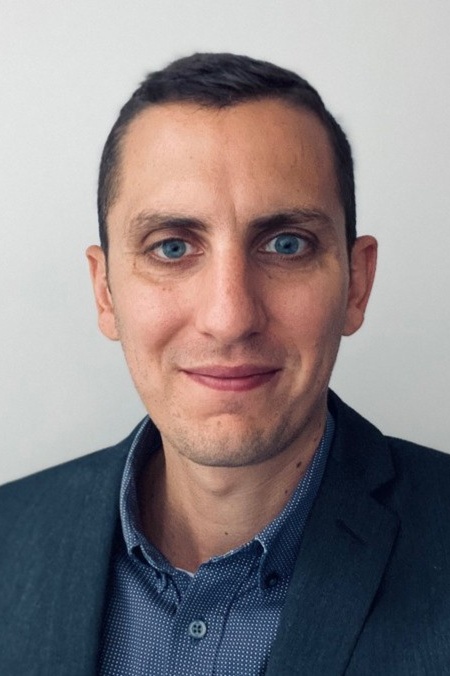
Matthew Bross
Assistant Research Professor, Fluid Research Department
Penn State Applied Research Laboratory
Turbulent superstructures
February 13, 2025
At moderate to high Reynolds numbers, the separation between the smallest and largest spatial/temporal scales in turbulent boundary layers (TBLs) can be several orders of magnitude. Streamwise elongated regions of high- and low-momentum in the log law layer that can extend up to several boundary layer thicknesses, often referred to as turbulent superstructures, effectively make this scale separation even larger. These superstructures strongly meander in the spanwise direction and carry a relatively large portion of the layer's turbulent kinetic energy, especially at large Reynolds numbers. Furthermore, an interaction between superstructures and the near-wall dynamics has been observed. Therefore, measurements capable of resolving the small and large scales are important for understanding the overall scaling and dynamics of TBLs. Due to the large range of scales, especially when considering superstructures, these kinds of measurements are challenging. Often, measurement approaches using multiple type of instrumentation or embedded systems are required. In this talk, novel measurement approaches using particle image velocimetry and tracking (PIV/PTV) aimed at resolving and characterizing the largest scales, i.e. superstructures, and the smallest scales near the wall will be discussed.
Biosketch
Dr. Matthew Bross joined Penn State ARL as an assistant research professor in 2022. Prior his current position, he worked as a research scientist and group leader for turbulence research at the Institute of Aerodynamics and Fluid Mechanics at the Universität der Bundeswehr München (UniBw) from 2015 to 2022. He graduated with a Ph.D. in Mechanical Engineering from Lehigh University in 2015. His dissertation, titled "Flow Structure on Unsteady Maneuvering Wings," was prepared under the supervision of Dr. Donald Rockwell. In the last 10 years, he has focused his professional expertise on fluid mechanics. More specifically, his research topics have studied unsteady maneuvering bio-inspired wings, the structural topology and scaling of high-Reynolds number turbulent wall-bounded flows, and the development and improvement state-of-the-art 2D and 3D digital particle image and tracking velocimetry (PIV/PTV) techniques. Due to his focus on experimental fluid mechanics, he has managed, designed, implemented, and evaluated data for dozens of wind/water tunnel experiments. His research has led to more than 40 high-quality journal publications, refereed proceedings and technical memorandums, with a focus on turbulence research and the development of novel PIV and PTV methods applied to high-speed incompressible and compressible flows.

Dan Fries
Assistant Professor, Department of Mechanical and Aerospace Engineering
University of Kentucky
Measuring high-enthalpy inductively coupled plasma flows via coherent via coherent anti-Stokes Raman scattering
February 20, 2025
Measurements in high-enthalpy environments representative of hypersonic flows are challenging due to background radiation, chemical reactions, extreme temperatures, and potential thermal and chemical nonequilibrium. Coherent anti-Stokes Raman scattering (CARS) is a non-linear optical four-wave mixing process which can be used as a gas phase diagnostic with properties that make it particularly useful for this kind of challenging environment. I will give an overview of challenges and results performing temperature measurements in the range of 3000–7000 kelvin using CARS in the high-enthalpy flow of an inductively coupled plasma torch. CARS was also used to simultaneously measure temperature and the relative CO to N2 concentration in the boundary layer of a graphite sample exposed to this high-enthalpy flow. The resulting data provides crucial insight into heat transfer and oxidative chemistry affecting the survivability of carbon-based ablative heat shields.
Biosketch
Dr. Dan Fries is an Assistant Professor in the Mechanical and Aerospace Engineering Department at the University of Kentucky leading the CoRe Flow Lab (Complex Reacting Flow Lab). His research utilizes optical and laser spectroscopic measurement techniques for the experimental characterization of fluid mechanical, chemical, and interface processes in high-enthalpy and high-speed flows. To perform this research, the CoRe Flow Lab utilizes microwave and inductive plasma sources for the generation of high-enthalpy flows and works on the inversion of comprehensive measurement models for parameter inference and uncertainty quantification. The lab collaborates closely with researchers at Sandia National Labs and computational researchers. Applications of the research include hypersonic flight, atmospheric reentry, chemical and electrical propulsion systems, and the reduction of the environmental footprint of these technologies.
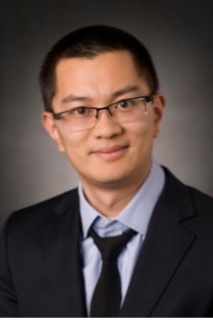
Bo Cheng
Associate Professor, Department of Mechanical Engineering
Pennsylvania State University
From Bernoulli's principle to aerial stability: Rapid disturbance rejection mechanism in hovering hummingbirds
February 20, 2025
Among the most striking acrobatic abilities of hummingbirds is their aerial stability, which is often tested during their high-speed courtship displays, aerial combat, or escape flights, where agility is often constrained by stability. By subjecting hovering hummingbirds to external disturbances, we showed that they robustly reject external torque within 1 wingbeat and regain stability in 3 wingbeats. This rapid response cannot be explained by the active neuromuscular stabilization via alternating the wing motion pattern, which lacked necessary response speed and magnitude. Instead, hummingbirds relied on a passive mechanism intrinsic to flapping flight, named Aero-Inertial Flapping Counter-Torque (Aero-Inertial FCT). FCT is rooted in Bernoulli's principle that states the quadratic relationship between wing velocity and aerodynamic pressure. To leverage Aero-Inertial FCT, hummingbirds maintained the relative motion of wings and body undisturbed, likely via spinal-level reflex or viscoelasticity of wing musculature for achieving wing-body joint stability. This result underscores the significance of passive or peripheral neural control to whole-body aerial stability for superior locomotor performance.
Biosketch
Dr. Bo Cheng is an Associate Professor of Mechanical Engineering at Penn State. Prior to this, he was a Postdoctoral Research Associate in the School of Mechanical Engineering at Purdue University, where he received his Ph.D. in 2012. He also received his M.S. in Mechanical Engineering from the University of Delaware and B.S. from Control Science & Engineering at Zhejiang University, China. His research interests lie in the broad science and engineering of efficient, robust and agile locomotion in fluids, including animal flight, fish swimming, robot locomotion and learning and biologically inspired fluid dynamics. Working in a highly interdisciplinary field, Dr. Cheng's work has been published in journals from various disciplines, such as Science, Science Advances, Journal of Fluid Mechanics, Physics of Fluids, IEEE Transaction on Robotics, Proceedings of Royal Society B, Journal of Experimental Biology, and Journal of the Royal Society Interface. His research has been funded by various programs of National Science Foundation (NSF), Army Research Office (ARO), Office of Naval Research (ONR), and Air Force Office of Scientific Research. Dr. Cheng received the NSF CAREER Award in 2016.
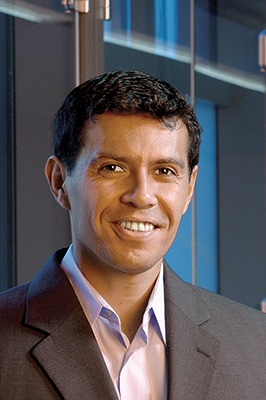
Paulo Arratia
Professor, Department of Mechanical Engineering and Applied Mechanics
University of Pennsylvania
Life in complex fluids
March 6, 2025
While much of our understanding of microbial swimming is derived from Newtonian fluid mechanics, many microorganisms including bacteria, algae, and sperm cells move in fluids or liquids that contain (bio)-polymers and/or solids. Examples include human cervical mucus, intestinal fluid, wet soil, and tissues. These so-called complex fluids often exhibit non-Newtonian rheological behavior due to the non-trivial interaction between the fluid microstructure and the applied stresses. In this talk, I will show how the presence of polymers in the fluid medium can strongly affect the motility behavior of microorganisms. In particular, I will focus on the effects of fluid elasticity (and viscosity) on the swimming behavior of the bacterium E. coli ("puller") and the green algae C. reinhardtii ("pusher"). Results show that elastic and viscous stresses can significantly affect motility kinematics (speed, beating frequency and amplitude) and energetics of such microorganisms in unexpected ways. For example, the run-and-tumble mechanism characteristic of E. coli is suppressed, and its speed is enhanced by fluid elasticity (and possibly shear-thinning). On the other hand, elastic stresses hinder the swimming speed of both sperm cells and C. reinhardtii and lead to significant hypertension in their flagellum, indicating a common trait among the "9+2" axoneme structures in complex fluids. Finally, I will discuss how even minute amounts of polymer can affect the collective motion of swimming E. coli. These results demonstrate the intimate link between swimming kinematics, biology, and fluid rheology and present an exciting research direction for physicists and engineers alike.
Biosketch
Dr. Paulo E. Arratia is the Eduardo D. Glandt Distinguished Scholar and Professor of Mechanical Engineering & Applied Mechanics (MEAM) and Chemical & Biological Engineering (CBE) at the University of Pennsylvania. He received a Ph.D. from Rutgers University in 2003 and was a postdoc in the Department of Physics at Haverford College (2003–2005) and then at the University of Pennsylvania (2005–2007). Paulo is the recipient of the National Science Foundation CAREER Award, the American Chemical Society New Investigation Award, and a Fellow of the American Physical Society (APS). He is also the recipient of the Milton Van Dike Award (APS-DFD), Gallery of Fluid Motion Award (APS-DFD/GNSP), the Rutgers University Early Career Distinction Award, the Christian R. and Mary F. Lindback Award for Distinguished Teaching, the Ford Motor Company Award for Faculty Advising, and the Penn Health Pioneer Award. Paulo's research focuses on the interface of fluid dynamics, soft & living matter, and earth sciences including viscoelastic & debris flows, rheology of dense colloidal suspensions & granular materials, and swimming of microorganisms in complex environments.
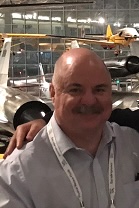
Michael Krane
Research Professor, Fluid Research Department
Penn State Applied Research Laboratory
Aerodynamics of human speech sound production
March 20, 2025
This talk will describe the principal features of human speech aerodynamics, focusing on the voice. Aerodynamic mechanisms are those corresponding to terms in the Bernoulli and integral momentum equations. We estimate these terms using measurements of flow a scaled-up model, and in a life-scale model of the human airway, as well as aeroelastic–aeroacoustic simulations. It will be shown that the glottal jet affects the driving pressure force, by estimating Bernoulli equation terms in the contraction and jet regions. We further show, by estimating the terms of the integral momentum equation, that vocal fold drag, the principal source of sound, is nearly balanced by a pressure force driving flow through the vocal folds. Furthermore, amplitudes of these two forces vary with vibration frequency. The equivalence between drag and driving pressure force is further demonstrated using measurements of fluctuating driving pressure and radiated sound pressure.
Biosketch
Dr. Michael Krane is Research Professor at the Penn State Applied Research Laboratory, where he has worked since 2006. Prior to Penn State he worked at jointly at École Centrale de Lyon, AT&T/Lucent, and Rutgers University. He studied Mechanical Engineering (B.S., M.S., Case-Western Reserve University), and Aerospace Engineering (Ph.D., Penn State University). Research interests include unsteady fluid mechanics, focusing on aero/hydroacoustics, fluid–structure interaction, high-speed imaging, optical fluid flow measurements, and signal and image processing. Application areas include: human speech sound production, avian aeroacoustics, mammalian olfaction aerodynamics, and flow noise prediction and reduction.
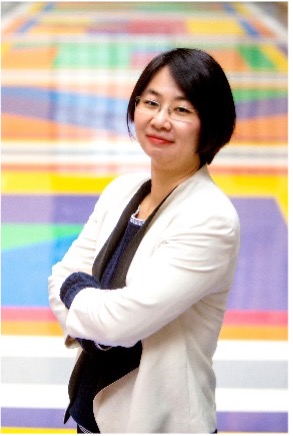
Sili Deng
Class of 1954 Career Development Chair, Associate Professor, Department of Mechanical Engineering
Massachusetts Institute of Technology
Multiphase combustion for energy conversion and materials synthesis
April 3, 2025
Combustion has long been central to energy conversion, but its role is rapidly evolving to meet the demands of a sustainable energy future. This talk explores how combustion processes can be leveraged both for advanced materials synthesis and for deepening our understanding of complex reactive systems. In the first part, I will introduce flame-assisted spray pyrolysis as a scalable and rapid approach for producing lithium-ion battery cathode materials, demonstrating how flame-based synthesis enables control over particle morphology and enhances electrochemical performance. In the second part, I will shift focus to the combustion of energetic materials, highlighting inverse modeling approaches that extract chemical kinetics and transport properties from thermal and pressure data. These methods offer new pathways to decode the coupling between reaction and transport phenomena, ultimately enabling the rational design of energetic systems with tailored thermal and gas-generation behaviors.
Biosketch
Dr. Sili Deng is the Class of 1954 Career Development Associate Professor in Mechanical Engineering at Massachusetts Institute of Technology. She received her doctoral degree in Mechanical and Aerospace Engineering from Princeton University, co-advised by Profs. Chung K. Law and Michael E. Mueller. After her postdoctoral training with Prof. Xiaolin Zheng at Stanford University, she joined MIT as an Assistant Professor in 2019. Her research focuses on energy conversion and storage, specifically, the fundamental understanding of combustion and emissions, physics-informed data-driven modeling of reacting flows, carbon-neutral energetic materials, and flame synthesis of materials for catalysis and energy storage. Prof. Deng has received many awards including the Bernard Lewis Fellowship from the Combustion Institute in 2016, the NSF CAREER Award in 2022, the Irvin Glassman Young Investigator Award in 2024, and the US Early Career Combustion Investigator Award in 2025.
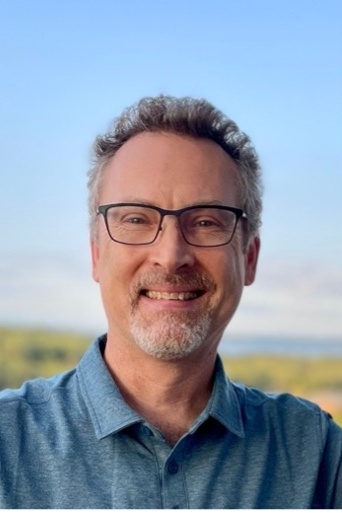
Michael Graham
Steenbock Professor of Engineering and Harvey D. Spangler Professor, Department of Chemical and Biological Engineering
University of Wisconsin–Madison
Data, dynamics, and manifolds: Dimension reduction and time evolution methods for modeling and control of complex flows
April 10, 2025
Fluid flows often exhibit chaotic or turbulent dynamics, and require a large number of degrees of freedom for accurate simulation. Nevertheless, because of the fast damping of small scales by viscosity, these flows can in principle be represented with many fewer dimensions, as their long-time dynamics relax in state space to a finite-dimensional invariant manifold. Classical data-driven methods for dimension reduction approximate this manifold as a flat surface, but for complex systems, this approach is severely limited. We describe a data-driven reduced order modeling method, "Data-driven Manifold Dynamics" (DManD), that finds a nonlinear coordinate representation of the manifold using a machine-learning architecture called an autoencoder, then learns a neural ordinary differential equation for the dynamics on the manifold. Exploitation of symmetries substantially improves performance. We apply DManD to a range of systems including transitional turbulence, where we accurately represent the dynamics with 25 degrees of freedom, as compared to the 105 degrees of freedom of the direct simulation. We then use the model to efficiently train a reinforcement learning control policy that is highly effective in laminarizing the flow. We also describe an autoencoder architecture that yields an explicit estimate of manifold dimension. Finally, we describe recent work on the relationship between neural ODE and Koopman operator approaches to prediction of time evolution in complex nonlinear systems. We demonstrate that a common implementation of a Koopman-operator-based approach, extended dynamic mode decomposition with dictionary learning (EDMD-DL), is equivalent to a neural network representation of the nonlinear discrete-time flow map on the state space.
Biosketch
Dr. Michael D. Graham is the Steenbock Professor of Engineering and Harvey D. Spangler Professor of Chemical and Biological Engineering at the University of Wisconsin–Madison, and is also a Professor of Mechanical Engineering. He received his B.S. in Chemical Engineering from the University of Dayton in 1986 and his PhD. from Cornell University in 1992. After postdoctoral appointments at Houston and Princeton, he joined the faculty at Madison in 1994.
Professor Graham's research interests include the dynamics of complex fluids, blood flow, swimming microorganisms; and nonlinear dynamics in Newtonian and complex fluids. He is author of two textbooks: Microhydrodynamics, Brownian Motion, and Complex Fluids and Modeling and Analysis Principles for Chemical and Biological Engineers (with James B. Rawlings).
Among Professor Graham's professional distinctions are the François Frenkiel Award (2004) and Stanley Corrsin Award (2015) from the American Physical Society Division of Fluid Dynamics, and a 2018 Vannevar Bush Faculty Fellowship from the US Department of Defense. In 2024 he was awarded the Eugene C. Bingham Medal of the Society of Rheology.
Professor Graham has served as an Associate Editor of the Journal of Fluid Mechanics and as Editor-in-Chief of the Journal of Non-Newtonian Fluid Mechanics. He is Past President of the Society of Rheology.
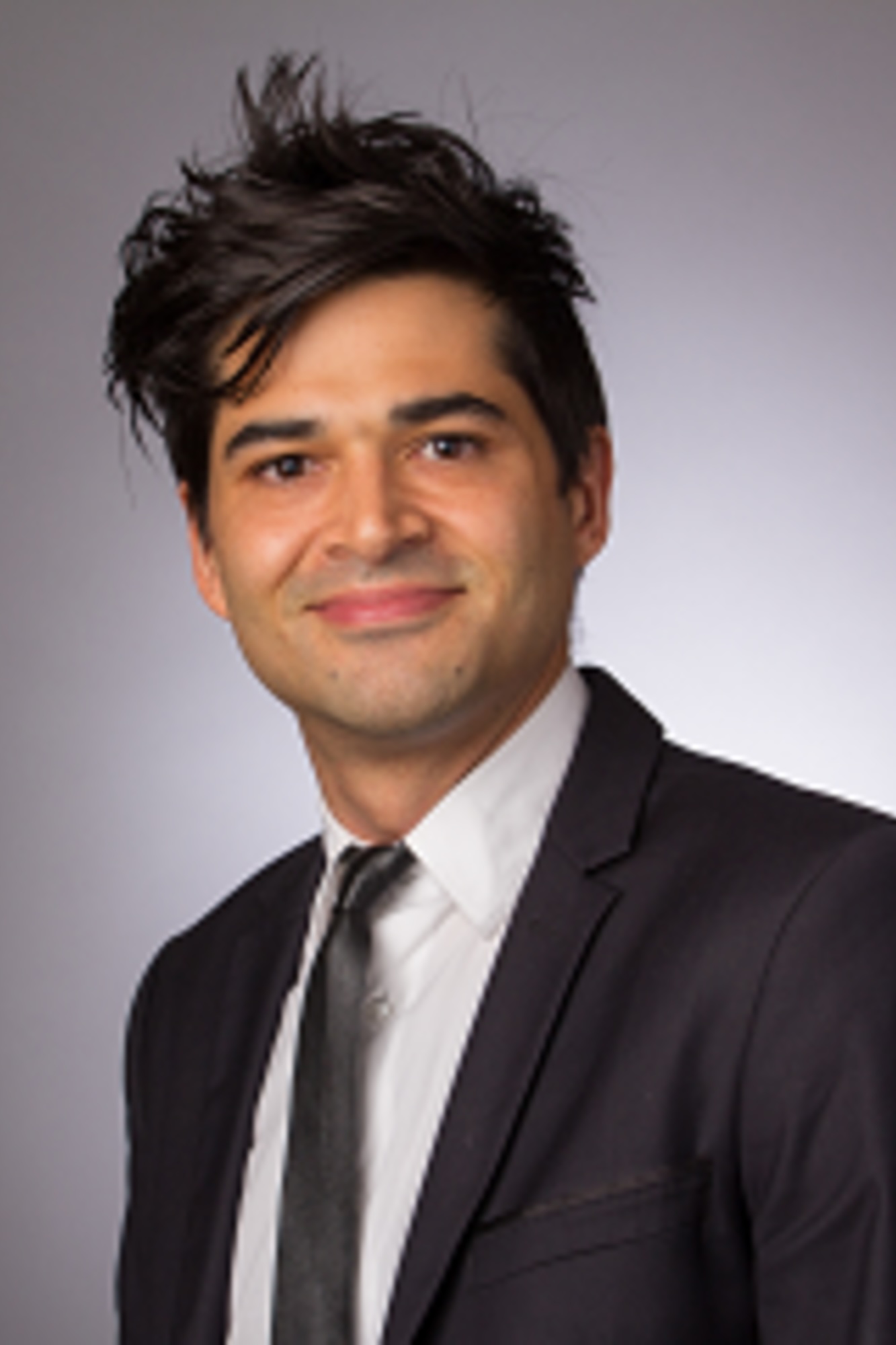
Raúl Cal
Daimler Professor, Department of Mechanical and Materials Engineering
Portland State University
Tiny wind turbines in a vast ocean: Flow, power and motion dynamics
April 15, 2025
Wind and water tunnel experiments of turbulent wakes in a scaled floating wind farm are performed. Scaling of a floating wind farm with a scaling ratio of 1:400 is made possible by relaxing geometric scaling of the turbine platform system, such that the dynamic response can be correctly matched, and to allow for relaxing Froude scaling such that the Reynolds number can be kept large enough. The response and performance of a single turbine scaled model are characterized for different wind and wave conditions. Subsequently, a wind farm experiment is performed with twelve floating turbine models, organized in four rows and three columns. Mechanisms for wake recovery and power production are discussed with implications on dependencies on wave conditions and wind farm arrangement.
Biosketch
Dr. Raúl Bayoán Cal is the Daimler Professor in the Department of Mechanical and Materials Engineering at Portland State University. He received his Ph.D. in Mechanical Engineering from Rensselaer Polytechnic Institute. He was a postdoctoral fellow at Johns Hopkins University. His research focuses on understanding fluid flow phenomena as it relates to physical systems such as turbulence with emphasis placed on physics related to wall-bounded, free-shear and multi-phase flows as well as wind/solar energy, and capillary microfluidics including in both terrestrial and space.
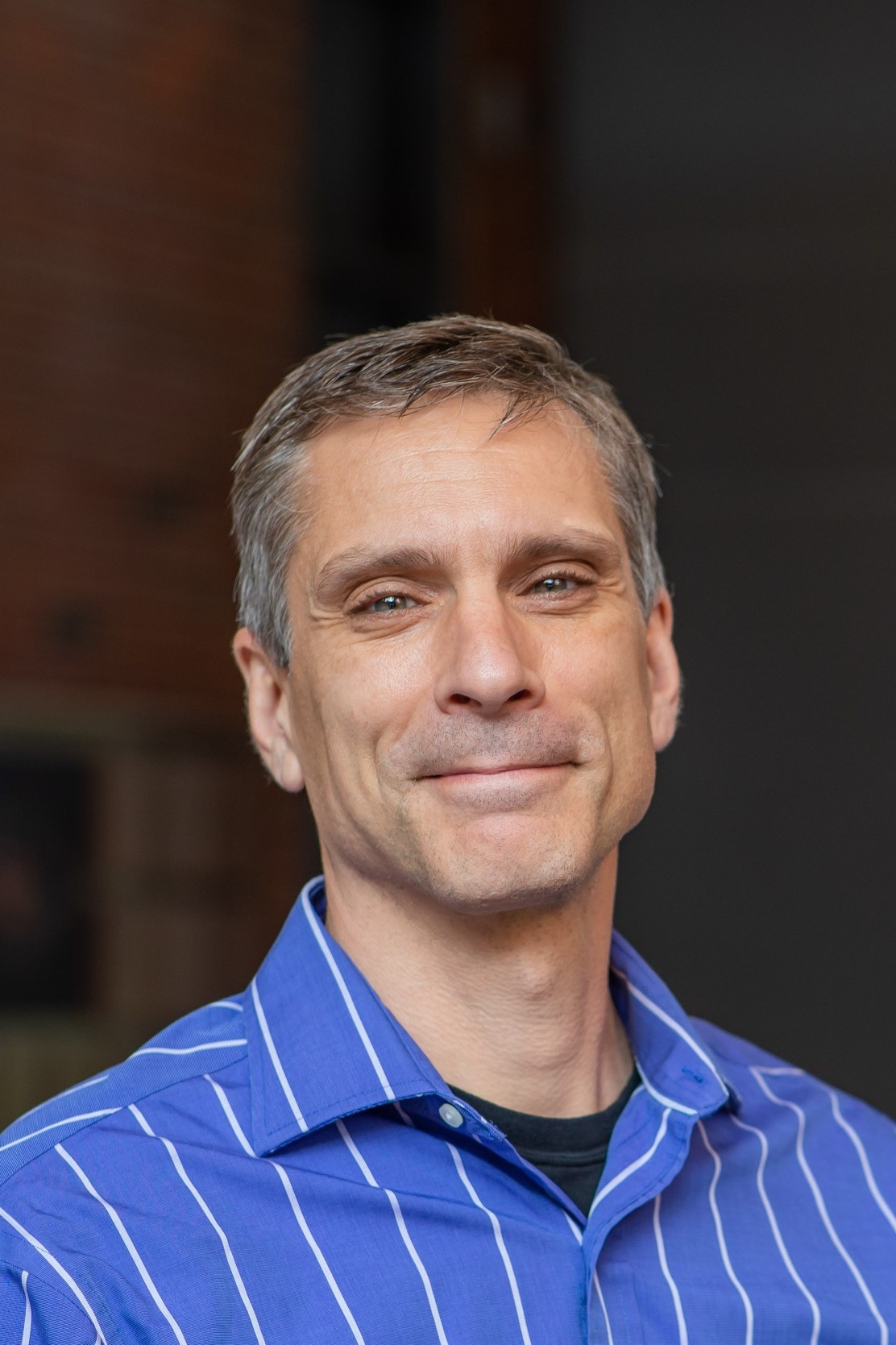
Sean Bailey
Professor, Department of Mechanical and Aerospace Engineering
University of Kentucky
What can we learn from drones? Addressing the in-situ data gap in meteorology
April 17, 2025
The atmospheric boundary layer is where most of the exchange between the Earth's surface and the atmosphere occurs. It regulates energy transfer, affecting surface temperatures and atmospheric stability with much of these effects introduced amplified through the actions of turbulence which is produced within the boundary layer. This turbulent transport therefore impacts a diverse range of applications including low-level aviation, wind energy, and pollutant dispersion. However, there are not many measurement systems capable of measuring atmospheric boundary layer turbulence and other physical processes that can occur within its boundary layer, resulting in a loss of information referred to as the in-situ data gap. Over the last decade, there has been an increasing interest in using uncrewed aerial vehicles (UAVs) to fill this data gap for both research and operational applications. In this talk, I will discuss the ongoing work being conducted at the University of Kentucky to develop and deploy UAVs for atmospheric research and discuss how UAVs have the potential to become part of operational day-to-day weather forecasting.
Biosketch
Dr. Sean Bailey earned a doctorate at the University of Ottawa funded by both national and provincial scholarships to study the turbulent interactions between rotating flows and turbulence. This was followed by a post-doctoral fellowship and associate research scholarship at Princeton University contributing to research on high Reynolds number turbulence in wall-bounded flows. He joined the Department of Mechanical Engineering at the University of Kentucky in 2010 where he continued his research in the experimental study of turbulent flows with focus on the role of coherent structures in boundary layers, unsteady vortex flows, interaction between coherent structures and homogeneous turbulence, scaling of wall-bounded flows at high Reynolds numbers and the development of experimental methods. In 2014 he received an NSF CAREER award to fund research into using autonomous uncrewed aerial vehicles (UAVs) to measure turbulence in the atmospheric boundary layer and has since deployed UAVs in studies addressing a broad range of atmospheric flows including boundary layer turbulence, drainage flows, wind turbine wakes, and stratospheric turbulence.
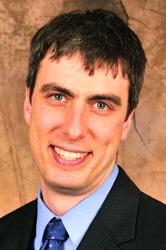
Johan Larsson
Professor, Department of Mechanical Engineering
University of Maryland, College Park
Grid-adaptation for large eddy simulations
April 24, 2025
While grid-adaptation has reached a certain level of maturity in several areas of CFD, the application to turbulence-resolving simulations (most notably, large eddy simulations, or LES) is still in its infancy. The chaotic and broadband nature of the dynamics in an LES leads to 2 major challenges. First, the grid affects both the numerical and modeling error in LES, compared to only the numerical error in non-broadband problems. As a result, the estimation of the local error production can not be purely mathematical but must also require physics-informed reasoning and assumptions. Secondly, the chaotic nature causes adjoints to diverge exponentially, which makes direct application of the adjoint-weighted residual method cumbersome.
The talk will discuss progress made on this problem over the last 5–10 years in the PI's group, along with outstanding issues and ongoing/future work.
Biosketch
Dr. Johan Larsson is a Professor at the University of Maryland where he works on multiple problems in the field of computational turbulence including wall-modeling for large eddy simulation, grid-adaptation for turbulence-resolving simulations, high-speed turbulent flows, and uncertainty quantification for turbulence problems.
He earned his Ph.D. at the University of Waterloo, Canada, in 2006, and then worked at the Center for Turbulence Research at Stanford University as a postdoctoral fellow and Research Associate for 6 years before joining the University of Maryland in 2012.
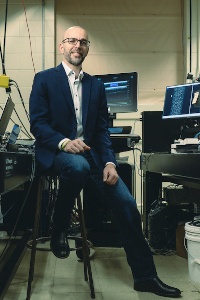
Pavlos Vlachos
St. Vincent Health Professor of Healthcare Engineering, School of Mechanical Engineering
Purdue University
From lab to clinic: Advancing flow velocity measurements in fluid mechanics and cardiovascular flow imaging
May 1, 2025
Flow velocity measurements underpin our understanding of flow physics in research laboratories and clinical environments. Accurate quantification of these measurements is essential for studying fundamental flow phenomena. In the first part of this seminar, I will discuss progress in uncertainty quantification methods for particle image velocimetry (PIV). These methods leverage robust statistical models and advanced signal processing to address the inherent challenges of velocity measurement in complex and dynamic flows, thereby improving accuracy and reliability in experimental fluid mechanics.
In the second part, I will highlight how these principles extend to medical imaging modalities such as ultrasound and phase-contrast MRI. The human cardiovascular system exhibits intricate flow patterns that significantly deviate in disease states; accurately measuring these flows is key to diagnosing and monitoring conditions like congenital heart defects, aneurysms, and heart failure. However, inherent limitations such as image noise, resolution constraints, and velocity reconstruction errors present significant obstacles. This presentation will explore new techniques that enhance cardiovascular flow measurements, including data augmentation guided by flow physics, phase unwrapping, denoising approaches, and advanced bias error modeling. I will also demonstrate how refined methods for measuring parameters such as relative pressure, wall shear stress, and other flow-derived markers can be integrated to improve accuracy and resolution. Illustrative examples from preclinical and clinical studies will showcase how these tools help connect flow characteristics (e.g., pressure, shear, strain, and energy losses) to disease conditions—ultimately fostering improved diagnosis, treatment, and patient outcomes.
Biosketch
Dr. Pavlos Vlachos is a professor at the School of Mechanical Engineering and the Weldon School of Biomedical Engineering (by courtesy) at Purdue University. He serves as the St. Vincent Health Professor of Healthcare Engineering. He is Director of the Regenstrief Center for Healthcare Engineering and the Eli Lilly and Purdue University Research Alliance Center.
He received his Diploma in Mechanical Engineering from the National Technical University of Athens (1995) and his M.S. (1998) and Ph.D. (2000) in Engineering Science and Mechanics from Virginia Tech. After serving as a visiting and then research assistant professor at Virginia Tech, he joined the Department of Mechanical Engineering there as an assistant professor in 2003, was promoted to associate professor with tenure in 2007, and became a full professor in 2011. He joined Purdue University in 2013.
Dr. Vlachos's research focuses on biofluids and biomechanics, with applications in cardiovascular disease, drug delivery, congenital heart defects, cerebral aneurysms, and diagnostics using ultrasound and MRI. He also studies tissue biotransport and nanoparticle-based therapies for drug delivery.
He has led or contributed to over 90 funded research projects (over $100M) and authored 197 journal articles and over 330 conference papers and abstracts. He has advised 12 postdocs, 25 Ph.D. dissertations, 30 M.S. theses, and has 12 patents (5 licensed) with 51 additional intellectual property disclosures.
Dr. Vlachos has earned numerous distinctions from prestigious organizations and academic bodies throughout his career. In 2020, he was named a Fellow of the American Society of Mechanical Engineers, followed by his election as a Fellow of the American Institute of Medical and Biological Engineers in 2022. He became a Fellow of the American Heart Association in 2023 and was recognized as a Fellow of the American Physical Society in 2024. Among other accolades, Dr. Vlachos counts the NSF CAREER Award and the MIT T.F. Ogilvie Lectureship Award, reflecting his continual pursuit of pioneering work in fluid mechanics and biofluids. He has also received multiple paper awards from societies and journals and various college-wide honors for outstanding research and teaching excellence.